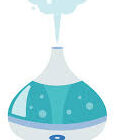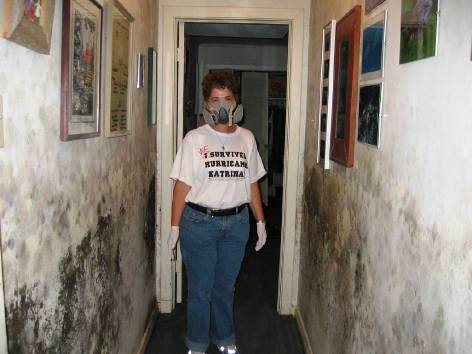Mold Infection Symptoms You Must Look Out for Always
What are the 10 warning signs of mold toxicity you should be aware of? They are more than that. In fact, here, we will look at 15 common indications of mold poisoning.
These are:
- Breathing issues in pets
- There is a musty smell in the house
- Itching on the skin
- Fungal arthritis
- Digestion problems
- Persistent coughs
- Itching throats and watery eyes
- Depression, stress, and anxiety
- Poor sleeping patterns
- Migraines when indoors
- Unexplained fatigue
- Asthma triggers
- Black spots on the ceiling
- Mold and mildew on your clothes
- Tingling and numbness
In another article, we looked at the signs of black mold exposure in babies. Black mold is a serious indoor allergen.
It has serious health effects on the human body. Thus, it’s best not to wait for black mold exposure symptoms to start showing.
By then, it might be too late.
Also, most of the humidifier sickness symptoms come from mold in the house. Thus, give your house a regular check for black mold or even other types of mold from time to time.
What is mold toxicity?

This is a condition or a set of conditions that you experience when you have been exposed to black mold or other mold poisoning.
Black mold is really notorious. It can cause many symptoms of illness. Today, when you read about mold toxicity, 10 to 1, it is about the ill effects of black mold.
Mold toxicity can show up in two main ways, which are as follows:
1. Immune reaction
This type of reaction causes allergic symptoms in adults, kids, and pets. These signs include itchy eyes, running eyes and nose, shortness of breath, skin itchiness, and asthma flare-ups.
2. Chemical reaction to mold
Inflammatory reaction to black mold exposure come from exposure to mycotoxins. The signs of mold-driven inflammatory response are many, but the most outstanding ones are:
- Weight gain/loss
- Cognitive impairments: loss of memory, stress, anxiety
- Dizziness and vertigo
- Unexplained fatigue
- Problems with digestion
- Hormonal imbalances and mood swings/irritability
Of course, other illnesses and allergens, such as dust mites, can cause the same symptoms. But remember, dust mites thrive in high humidity, the same as mold!
Keep reading to see the symptoms of mold toxicity so that you can be sure that, indeed, you have a mold infestation inside your home.
15 mold infection symptoms everyone should know

Black mold produces mycotoxins, which affect our health seriously. Babies exposed to black mold for a long time can develop asthma, experience slurred speech, stunted growth, and even death.
For your health, it’s best to know the warning signs of mold toxicity. That way, you can attend to the problem before it’s too late.
1. Breathing problems in your pets (dogs)

If you have a dog, and he or she starts having breathing trouble, think of mold.
When dogs are exposed to black mold, they will show almost the same signs that humans do. These include wheezing, coughing, and other signs of distress.
You could have strong immunity that is able to repress the symptoms of mold exposure for a long time. But your dog is different.
Watch it. If it is irritable and experiences shortness of breath, it might have inhaled a good amount of mold spores.
2. There is a musty smell in the house
Before you run your air purifier to remove the musty smell from your house, pause for a second and think about where it could be coming from.
It is most likely caused by mold!
Small levels of mold infestation will not cause the musty smell. When the black mold has spread too much, that’s when you get the smell.
Mold will start in spaces prone to high humidity, such as the basement, kitchen, and bathroom. When it matures, it will produce mold spores that will float in the air.
That is how they float to other parts of the house to start mold colonies.
Check your hygrometer. If the relative humidity level of your bedroom is high and there is a musty smell, you could have a mold colony. Check all the dark spaces.
Similar smells in the kitchen and bathroom are an indication of a mold infestation in your home.
3. Your skin itches too much
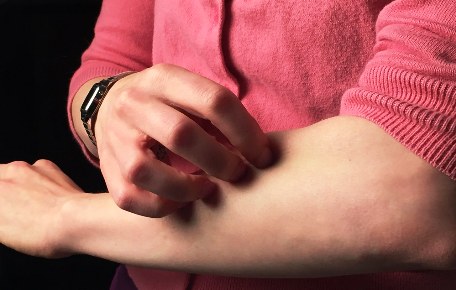
A ceaseless itching sensation on your skin is an indication of mold toxicity in your spores. Some people might experience more itching than others.
If you have a baby, you might see red patches on the skin with rashes. These come from a skin reaction when it is exposed to mold spores.
4. You have fungal arthritis
This is serious, and it comes from prolonged exposure to indoor mold. Specifically, exposure to aspergillus, exserohilum, and candida causes fungal arthritis. These three types of mold cause this condition.
5. Irritation in your digestion
Mycotoxins from black mold are notorious for causing digestive issues. These issues manifest in the form of blood in stool, diarrhea, stomach cramps, nausea, and vomiting.
And no, you don’t have to ingest mold by eating moldy food. Even if you inhale the mold, it will cause this disruption to your digestive system.
6. Persistent coughs
When you live in a place with high humidity such as Seattle, your body can overreact by overproducing mucus. This gives you a persistent cough. Black mold exposure leads to unrelenting coughs too.
7. Itching throat and watery eyes

Mycotoxins are very small and are not visible to the bare eye. They get into your cells through the eyes.
When the eyes are exposed to these small pathogens, they try to repel them by producing tears. That’s why we say watery eyes, an itching throat, and eyes are signs of mold toxicity.
8. Depression, stress and anxiety
It is possible to understand where anxiety, stress, and depression could eventually come from.
When you experience symptoms like sinus problems, migraines, watery eyes, an itchy throat, fungal arthritis, and a dysfunctional nervous system, your body will secrete more stress hormones.
A higher level of stress hormones will lower the level of feel-good hormones such as dopamine and serotonin.
You will become moody, suffer anxiety attacks, and eventually suffer from sustained depression. Most of the time, this happens after long exposure to mold.
9. Poor sleeping patterns
Please note that sleeping in a dry room can cause insomnia. However, if you have been experiencing disruptions to your sleep so often and the hygrometer needle points above 50 percent, mold toxicity is a possibility.
10. Migraines when indoors
It is possible to know whether your migraines are caused by exposure to mold. If you only experience them indoors and they disappear after some time in the fresh air, mold could be to blame.
11. Unexplained fatigue
Exposure to stachybotrys chartarum, also called black mold, can cause reduced oxygen-carrying capacity in your cells.
It does this by reducing the number of red blood cells. When there is minimal nutrient and oxygen transfer to the cells, you are going to feel more fatigued all the time, for no reason!
12. Asthma triggers
Dry air is bad for asthma because it causes inflammation of the airways, leading to less air getting to the lungs.
Humid air is equally bad for asthma. Exposure to mold is many times worse for asthma! If you have a family member suffering from asthma and there seem to be too many flare-ups of late, check for mold colonies in your home.
The bad thing is that mold releases millions of spores in the air, which we cannot see. When they mix with other indoor allergens such as dust, you get asthma flare-ups.
13. Black spots on the ceiling, mushy spots on the flooring
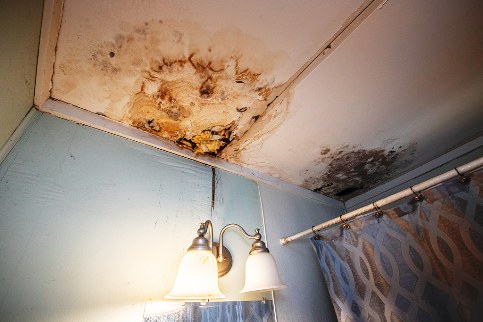
If you can see black, damp spots on the ceiling or walls, that’s mold! The same applies to soft spots on your floorboards.
It means there has been sustained leakage for some time, and it has soaked through the wood. Check your crawl spaces and the basement for moisture.
14. Mold and mildew on your clothes
If there is a musty smell in your closet, you need to remove all of the clothes and footwear and check them for mold. Leather grows mold when exposed to high humidity.
Just giving your clothes a rubdown to remove mold does not make you safe. When you wear them, you will be inhaling the spores from close quarters, leading to serious health issues.
15. Tingling and numbness
Prolonged mold exposure will affect your nervous system. You will experience tingling sensations on your hands and feet from time to time.
When to see a doctor due to mold exposure

Most of the symptoms of mold exposure will go away when you have cleared away the root cause. However, sometimes you could need special medical attention for more serious symptoms.
If you have fungal arthritis, please see a doctor. Such a condition is an indication of a weak immune system.
Most of the symptoms of mold exposure in adults that you have seen here can also be indications of other illnesses such as flu, common cold, asthma, and immune disorders. If they persist too long after mold removal, see a doctor.
The doctor can recommend blood work for mold testing. They can also recommend getting allergy shots to ease the mold symptoms.
If you know your immune system is compromised, you are at greater risk of developing nervous system disorders from mold exposure. See a doctor.
If your baby shows symptoms of mold exposure, take them to a pediatrician since they can develop pulmonary hemorrhage easily.
Is there a test for mold infection?

When you go to a doctor, they will analyze your symptoms to try to debug what could be wrong with you.
If there is a need to do a mold test, they will recommend a blood test to see the level of different types of antibodies. Remember, the immune system produces antibodies to deal with different types of pathogens.
Some online tests for mold toxicity, for instance, urine tests, are not clinically approved. Do not take any tests that a doctor has not approved.
Neurological symptoms of mold exposure
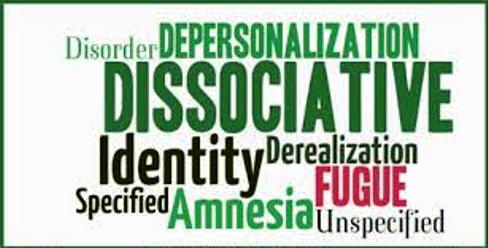
There are several neurological symptoms of mold exposure or mold toxicity. The most common ones are sensitivity to light, dizziness, tingling, and numbness sensations in your limbs.
In babies, prolonged mold exposure can lead to slurred speech. It can also lead to memory loss, attention deficits, and general weakness.
If you have been having bouts of depression, unexplained fatigue, problems concentrating for a long time, and joint pains, mold exposure is to blame.
Some of these issues may go away on their own after the mold is removed. Some might delay, requiring the help of a doctor.
Identifying the root cause of these neurological symptoms helps you know what you are dealing with. You can treat the root cause instead of the symptoms since they would only recur.
Frequently Asked Questions
Mold is a dangerous allergen, so you really don’t want it in your house. Once you know at what humidity level mold grows, you can prevent an infestation.
Here are a few frequently asked questions to shed more light on this matter:
How do I know if I have mold poisoning?
To prevent the growth of this fungus in your home, keep the humidity level at 30 to 50 percent all the time. Mold starts developing when the humidity level is 60 percent or higher.
What does mold poisoning feel like?
It feels like illness, discomfort, and irritation, all rolled into one. If you start experiencing breathing issues, teary eyes, skin irritation, and many other symptoms, you should find out whether you have mold indoors.
Some of these problems, such as wheezing and coughing, can develop into full-blown asthma. Since these signs can come from other illnesses as well, don’t try home remedies if the signs are persistent. See a doctor.
For people who already have asthma, mold exposure is indeed nasty. It can give them nasty flare-ups all the time. The inflammation of the airways or their flooding with mucus can lead to serious asthmatic attacks.
How long does it take for mold to poison you?
This depends on the person who has been exposed to mold. Children and the elderly have weak immune systems, so they can start to exhibit the symptoms of mold poisoning an hour or so after exposure.
For some people, it depends on whether they have allergies. If they have a mold allergy, the onset of mold poisoning will manifest soon after exposure.
But if you have mold exposure and you get in and out of a room with a mold infestation, it might not affect you. Thus, the period of exposure also matters.
The longer you have been living with mold, the more likely you are to show the symptoms of exposure.
How do you know if mold in your house is making you sick?
If you live in a humid environment and lately you have been seeing the doctor one too many times with signs that remind you of pollen allergy, you have mold poisoning.
Itchy skin, teary eyes, rashes, frequent headaches, a sore throat, and a runny nose are all indications of mold toxicity.
If you have an asthmatic person in the family, they are going to experience more attacks. However, even with all the signs we have mentioned here, it is best to rule out other causes first.
You could also check for mold in damp spaces, in crawl spaces, and closets. If you see signs of black mold, you will know for sure that these are signs of mold toxicity.
What happens to your body when there is mold in your house?
Can sleeping with mold in your room make you sick?

Sleeping once in a room with mold will not make you sick, unless you have asthma. However, sleeping in the same room every day will make you sick!
There are many symptoms of sleeping in a dry room and there are many more for sleeping in a room with a mold infestation.
People who are allergic to mold are going to show signs of mold toxicity earlier than those who aren’t.
But the truth is that even people who are not allergic to mold are still going to exhibit these symptoms.
If you experience asthmatic attacks too much (for people with asthma) and feel skin, throat, eye, and nose irritation, you have been exposed to molds.
Do you experience a musty smell in the bedroom? That’s the smell of mold! You don’t have to experience 10 warning signs of mold toxicity. Even these few show you have mold in your house.
How do you feel when you’re sick from mold?
The symptoms of exposure to mold come in many forms. They can be hard to miss because they are similar to symptoms you might get from colds, flu, and other common ailments.
In addition to the symptoms you would get from a serious cold, look out for post-nasal dripping, dry and scaly skin, watery eyes, persistent coughing, and sneezing.
If you feel fatigued or lethargic for no reason, you should look for mold symptoms in the house. Check the crawl spaces, especially the basement.
Check your hygrometer often. If it has been recording humidity levels higher than 50 percent, the sickness symptoms you have been experiencing are from mold exposure.
How long can you be sick from mold?
Conclusion
There are more than 10 warning signs of mold toxicity in your indoor air. However, the vital thing is to identify what has been causing all those health issues.
Hiring a mold removal company such as Mr. Mold Removal in Miami can help mitigate these problems.
Best yet, they will ensure that the problem does not recur.
You can also arrest the spread of mold spores in your home by running an air purifier for cigarette smoke removal.
Such a unit can also remove spores, viruses, and bacteria from your indoor air.
Also remember to check my posts on:
Air purifier or dehumidifier for musty smell
Can mold cause sinus infection
Is Air Purifier Good For Mold?
Can Mold Grow At 60 Percent Humidity?
